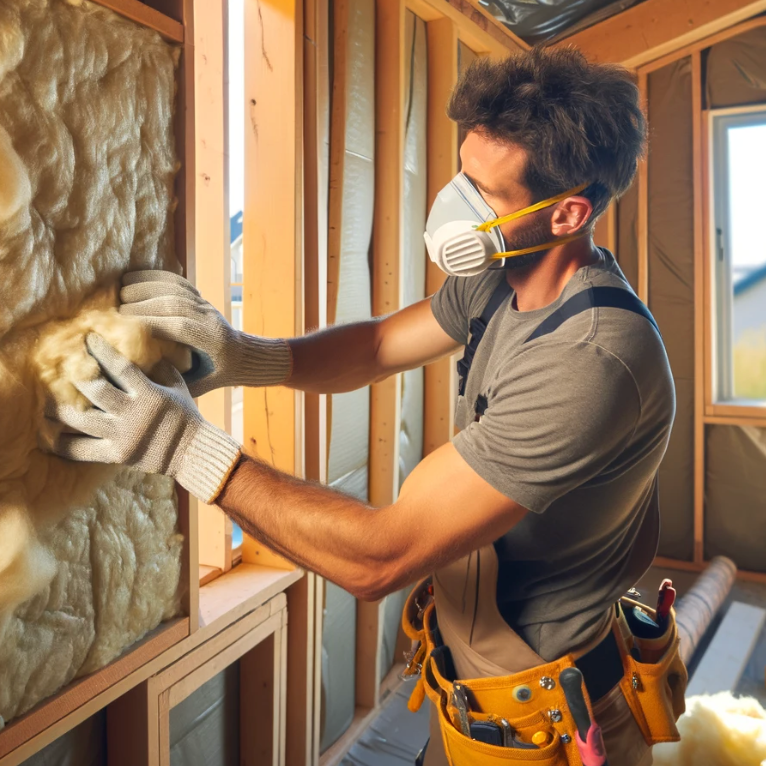
Choosing the right insulation for your home
Share
Choosing the right insulation for your home is crucial for maintaining comfort, reducing energy costs, and minimizing environmental impact. With a variety of insulation materials and methods available, it's important to understand the options and their benefits to make an informed decision. This guide will help you navigate through the key considerations and popular types of insulation to find the best fit for your home.
Why Insulation Matters
Energy Efficiency
Proper insulation reduces the amount of heat that escapes in winter and keeps your home cooler in summer. This leads to significant savings on energy bills as your heating and cooling systems won't have to work as hard to maintain a comfortable temperature.
Comfort
Insulation improves the overall comfort of your home by maintaining consistent temperatures throughout the year and reducing drafts.
Environmental Impact
By improving energy efficiency, insulation reduces the carbon footprint of your home, contributing to environmental conservation efforts.
Key Considerations for Choosing Insulation
R-Value
The R-value measures the insulation's ability to resist heat flow. Higher R-values indicate better thermal performance. The ideal R-value depends on your climate, home design, and the part of the house being insulated.
Material Type
Different insulation materials have varying thermal properties, installation methods, and costs. Consider the characteristics of each material to determine which best suits your needs.
Installation Method
Some insulation types are easier to install than others. Decide whether you want to undertake a DIY project or hire professionals. Professional installation may be more expensive but ensures optimal performance.
Moisture Resistance
In areas prone to moisture, such as basements and crawl spaces, choose insulation materials that are resistant to water and mold to prevent damage and maintain effectiveness.
Popular Types of Insulation
Fiberglass Insulation
Pros:
- Cost-effective
- Easy to install
- Available in batts, rolls, and loose-fill
Cons:
- Can irritate skin and lungs
- Lower R-value compared to some alternatives
Spray Foam Insulation
Pros:
- High R-value
- Excellent air sealing properties
- Expands to fill gaps and cracks
Cons:
- Expensive
- Requires professional installation
Cellulose Insulation
Pros:
- Made from recycled materials
- Good thermal performance
- Can be used in hard-to-reach areas
Cons:
- Settles over time, reducing effectiveness
- Needs to be kept dry to prevent mold
Mineral Wool Insulation
Pros:
- Fire-resistant
- Good soundproofing properties
- Resistant to moisture and mold
Cons:
- More expensive than fiberglass
- Heavier and harder to handle
Reflective Insulation
Pros:
- Effective in hot climates
- Easy to install
- Works well in combination with other insulation types
Cons:
- Limited effectiveness in cold climates
- Requires an air gap to function properly
Best Insulation for Different Areas of Your Home
Attic
- Recommended: Fiberglass batts, cellulose, spray foam
- Considerations: High R-value to prevent heat loss
Walls
- Recommended: Spray foam, fiberglass batts, mineral wool
- Considerations: Moisture resistance and soundproofing
Floors
- Recommended: Rigid foam, fiberglass batts, mineral wool
- Considerations: Insulate above unheated spaces
Basements and Crawl Spaces
- Recommended: Spray foam, rigid foam
- Considerations: Moisture and mold resistance
DIY vs. Professional Installation
DIY Installation
Pros:
- Cost savings
- Immediate results
Cons:
- Requires time and effort
- Potential for improper installation
Professional Installation
Pros:
- Ensures optimal performance
- Professional advice and service
Cons:
- Higher upfront cost
Conclusion
Choosing the right insulation for your home involves considering factors such as R-value, material type, installation method, and moisture resistance. By understanding the benefits and limitations of various insulation types, you can make an informed decision that enhances your home's energy efficiency, comfort, and environmental impact. Whether you opt for a DIY project or professional installation, proper insulation is a wise investment that pays off in the long run.
FAQs
-
What is the R-value, and why is it important? The R-value measures the insulation's ability to resist heat flow. Higher R-values indicate better thermal performance and energy efficiency.
-
Which insulation material is best for DIY installation? Fiberglass batts and rolls are popular choices for DIY installation due to their ease of handling and cost-effectiveness.
-
Can I use different types of insulation in different parts of my home? Yes, using different types of insulation in various areas of your home can optimize energy efficiency and address specific needs like moisture resistance or soundproofing.
-
How does insulation contribute to environmental conservation? By improving your home's energy efficiency, insulation reduces the need for heating and cooling, which in turn lowers greenhouse gas emissions and conserves natural resources.
-
When should I consider professional insulation installation? Professional installation is recommended for complex projects, such as spray foam insulation, or when you want to ensure maximum performance and compliance with building codes.
